Science / Functional Breathing Technique / Nose Breathing vs Mouth Breathing
Nose Breathing vs Mouth Breathing — The Science
How to Start Breathing Through Your Nose and Why It’s Important for Performance, Sleep and Longevity
Nose breathing. Most of us hadn’t thought about it until the science journalist, James Nestor’s bestselling book Breath, the New Science of a Lost Art hit the shelves, a couple of months into the first 2020 COVID lockdown. Nestor illustrates the case for nose breathing, clearly and convincingly. But nose breathing has been the foundation of the Oxygen Advantage® technique since the outset. And top athletes had been quietly using nose breathing exercises to excel, long before this knowledge became mainstream. Let’s dive into the science and discover why nose breathing could be the answer to your performance questions.

Whether you’re a weekend warrior or a pro athlete, you understand how important it is to strengthen and condition your muscles for greater speed, power, and accuracy. But even if you’re competing at a high level, it’s likely you were never taught to make the connection between nose breathing and success. Or to recognize the difference between nose breathing vs mouth breathing, and why it really matters.
Why is it worth integrating nose breathing exercises into your training?
When it comes to sports performance, nose breathing is akin to a silver bullet. If you want to excel, and you’re still breathing through your mouth, it’s a practice you need to adopt. Research from the University of Milan, published in November 2021, states: “Young basketball players may benefit from nasal breathing protocol during their regular training practice leading to remarkable improvements in both physical fitness and pulmonary function [1]”.
What do those remarkable improvements look like?
When you breathe through your nose:
- Working muscles receive more oxygen
- Recovery is quicker and injury risk lessens
- Your core, spine and pelvic floor are stronger
- Your nervous system is balanced, reducing performance anxiety and oxidative stress
How to breathe through your nose (and when you should do it)
Goal oriented people find it difficult to practice the maxim, “less is more.” The same competitive nature that helps you win can contribute to over-training, chronic fatigue, and a demoralizing speed plateau.
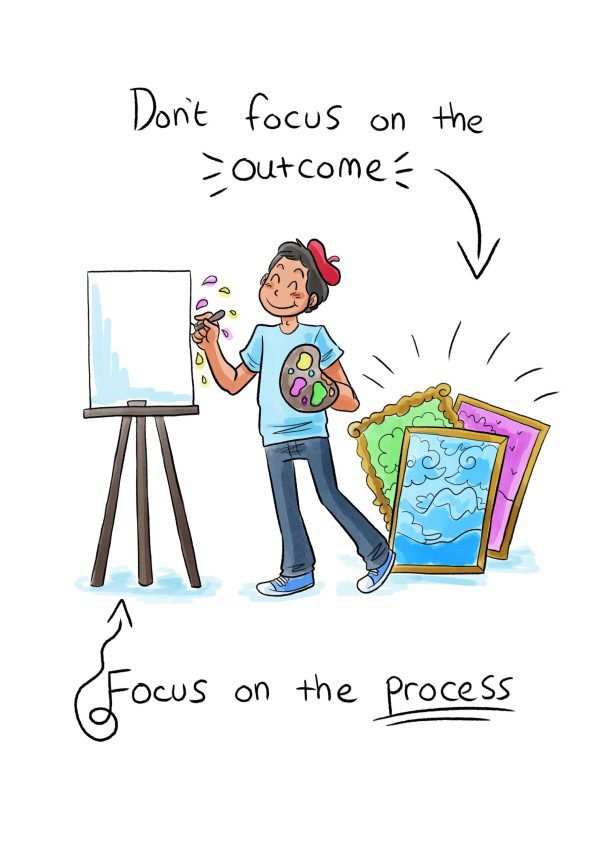
Just as we try to cram in extra hours at the gym, we are conditioned to breathe hard and fast during training to “get more oxygen” into our lungs. We follow expert advice, only to discover that we’re gassing out with exercise-induced asthma.
Contrary to common belief, less is more when it comes to breathing too. Nose breathing reduces the speed and volume of air reaching your lungs. This is vital for efficiency, and for optimal balance of your nervous system and blood gases.
If you want to optimize your training, you must examine your breathing outside of physical exercise and competition. Nose breathing is a 24/7 commitment. How you breathe during rest and sleep is just as important as how you breathe just before the starting pistol fires.
Nose breathing vs mouth breathing — the facts
Some coaches recommend breathing in through the nose and out through the mouth. You may feel that with nose breathing not enough air gets to the lungs. Many of us believe mouth breathing provides more oxygen.
It doesn’t work like that.

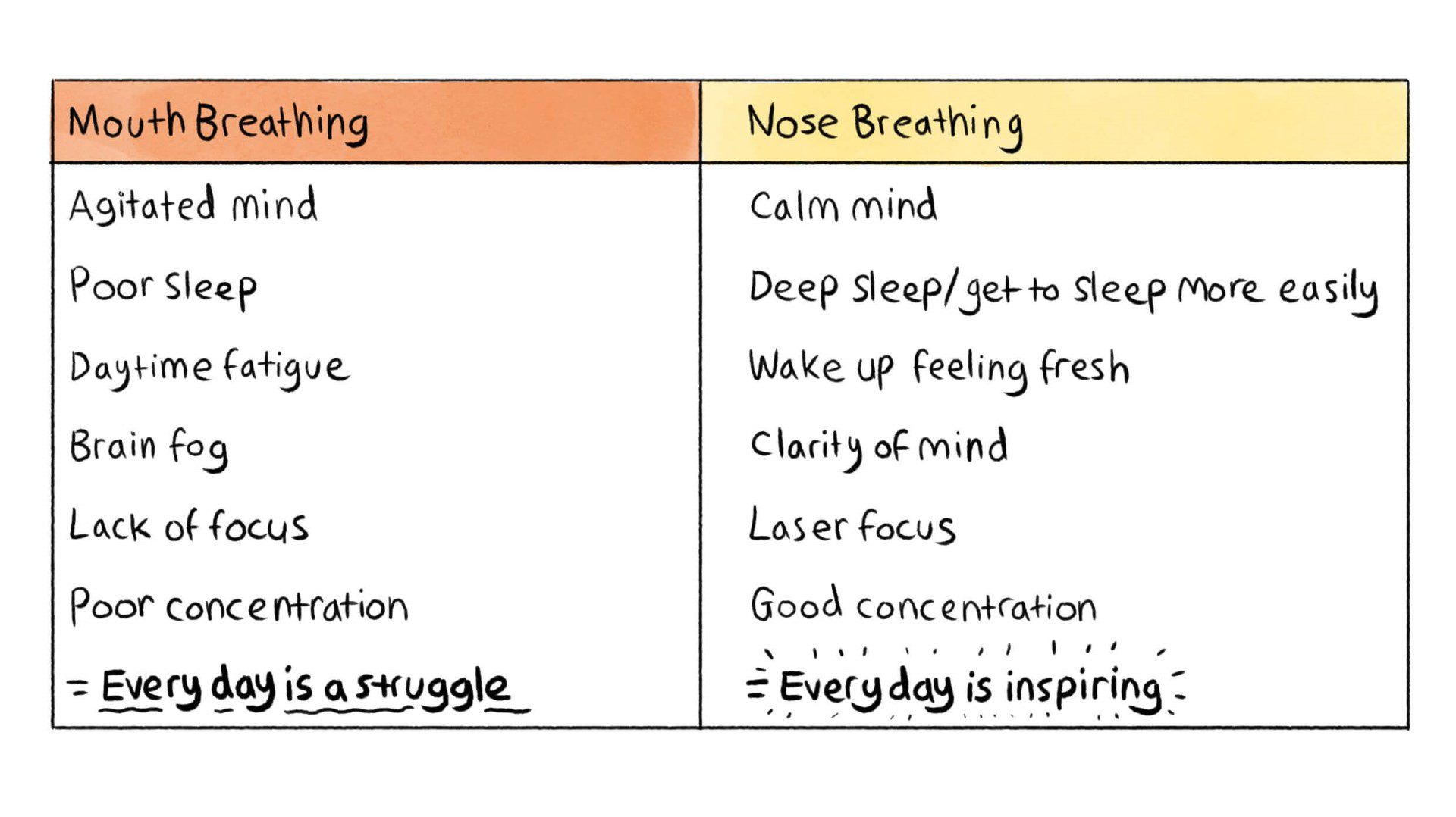
By integrating nose breathing into your physical training, you will increase your tolerance to air hunger and delay breathlessness. You will enhance lung function and improve oxygen uptake. You’ll breathe air deeper into your lungs and keep it there for longer. And you’ll avoid dehydration, airway irritation and infection.
Here’s how…
12 Benefits of Nose Breathing vs Mouth Breathing
-
- The inside of your nose is lined with tiny hairs called cilia. The cilia filter, warm and humidify inhaled air. They protect you against 20 billion particles of foreign matter every day.
- Some people argue you need to mouth breathe to bring in enough air during exercise. But research proves the opposite. The extra resistance during nose breathing results in 10 to 20% better oxygenation [2].
- Nose breathing is 22% more efficient than mouth breathing [3]. Which means breathing is much easier, and the breathing muscles don’t get so tired.
- Nose breathing keeps your airways clear. Breathing in through the nose and out through the mouth causes nasal congestion and makes it harder to breathe [4]. If you’re wondering how to breathe with a stuffy nose, the surprising answer is that you need to get used to nose breathing.
- The lungs draw oxygen from inhaled air during nasal exhalation too. Nose breathing is slower, and nasal exhalation creates a backflow of air into the lungs. The air stays in the lungs for longer, and the body has more time to extract oxygen from that air.
- The air hunger during nose breathing forces you to slow down until your breath is properly trained. This reduces stress and high blood pressure. And it stops you from overtraining.
- Nose breathing harnesses nitric oxide (NO) [5]. Nitric oxide is produced in the sinuses around the nose. It protects against airborne viruses, bacteria, allergens, and other pathogens. It opens the blood vessels in the lungs, allowing better oxygen diffusion.
- When there is a proper balance of oxygen and carbon dioxide (CO2) in the blood, the body maintains a balanced pH. Most oxygen travels around the body in red blood cells. CO2 is the catalyst that causes the red blood cells to release this load of oxygen to the body. If you breathe through an open mouth, you lose too much CO2. So nose breathing enhances your body’s ability to access the oxygen in your blood.
- Nose breathing during sleep makes sleep apnea less severe. Scientists found that during mouth breathing, apneas increase, and oxygen desaturation is worse.
- It is not possible to maintain diaphragm breathing through the mouth. Nose breathing engages and strengthens your diaphragm, which is an integral muscle of the core and necessary for the stability of your spine.
- During exercise, nose breathing can improve mental focus and boost coronary artery blood flow [6].
- Nose breathing reduces symptoms of exercise-induced asthma because it protects the airways from trauma and inflammation.
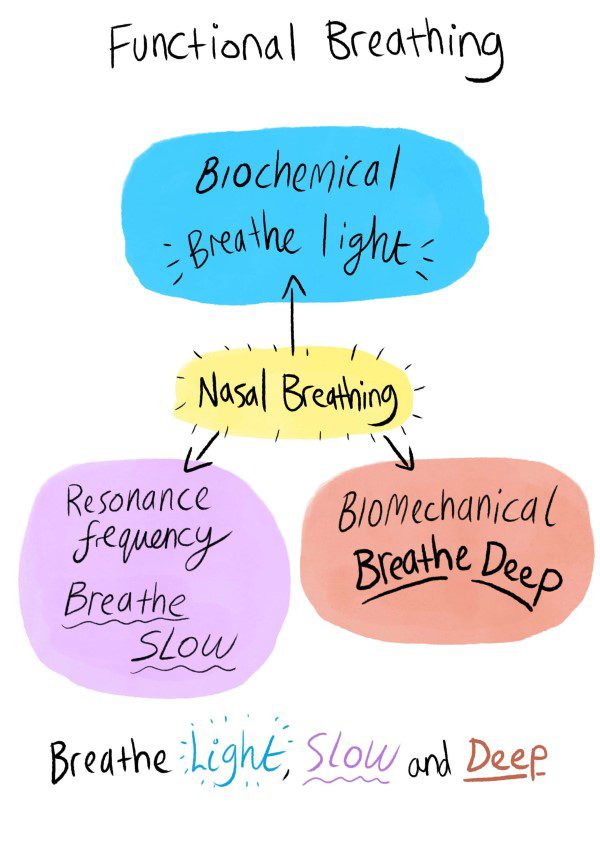
The Role of Nose Breathing in Preventing Pathogen Inhalation
Few of the body’s organs play as important a role as the nose. As mentioned above, tiny hairs called cilia and the presence of nitric oxide are just some of the ways in which the nose prevents pathogens from entering your bloodstream and causing sickness or infection.
If you have a respiratory issue like asthma or allergies, your ability to breathe properly will be affected negatively by mouth breathing. The nose is a vital part of the body’s defense system. It filters out foreign materials that may contain bacteria or viruses while allowing oxygen into our lungs. It also filters out many of the pollutants we encounter every day that negatively affect our breathing.
Effects of Pathogens on Respiration
Pathogens can affect respiratory function and cause a wide range of diseases, including:
- Respiratory infections: Viruses cause the most common types of respiratory infection, but other pathogens – such as bacteria and fungi – can also cause similar illnesses. In people with asthma or COPD (chronic obstructive pulmonary disease), respiration may be triggered by allergens or irritants in the air rather than inhaled pollutants.
- Asthma: This chronic inflammatory disease causes narrowing of the airways that makes it difficult for mucus to be excreted out of the lungs; making it hard for oxygen to reach the bloodstream. This constriction leads to shortness of breath, which can lead to coughing spasms and asthma attacks.
The nose is an integral part of the respiratory system and plays a key role in preventing pathogen inhalation. Keeping your mouth closed and breathing through your nose reduces the chances that an inhaled pathogen could negatively affect your health.
What the experts say about nose breathing vs mouth breathing
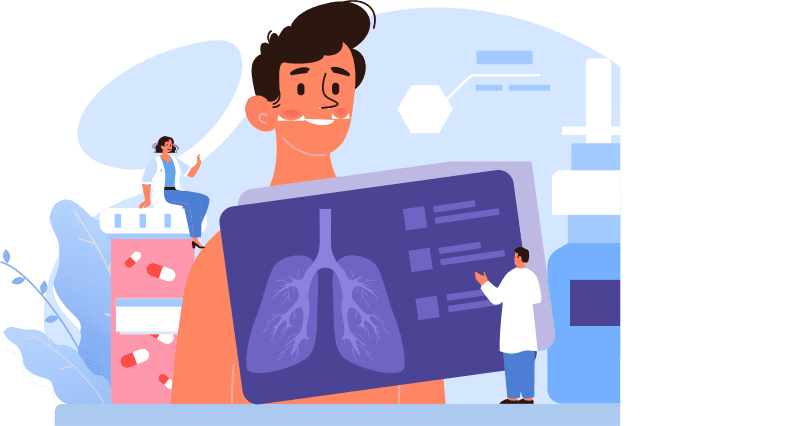
Mouth breathing leads to injury
When breathing is dysfunctional, movement cannot be functional. Unless you address mouth breathing, you will never be able to optimize your physical training. There will always be an underlying weakness that will manifest as trigger points, repetitive strain injury, lower back and neck pain and even urinary leakage. A 2020 study reports that 33% of elite athletes suffer incontinence [7]. This is largely due to poor diaphragm function. Your diaphragm can only work properly when you breathe through your nose.
Mouth breathing also contributes to respiratory conditions including asthma, which is common in sports [8]. Poor breathing equates to poor long-term health, and fit does not always mean healthy [9].
Mouth breathing causes changes in the acidity of the blood
Mouth breathing depletes blood carbon dioxide. This can cause blood pH to increase, leading to respiratory alkalosis. Respiratory alkalosis means the blood is too alkaline. Its symptoms include:
- Detrimental changes in the nervous system
- Alterations in physical and mental states
- Problems in the musculoskeletal system [10]
- Poor oxygenation of tissues and organs
- Increased pain perception
- Constriction of the blood vessels
- Development of myofascial trigger points
Each of these symptoms on its own can change the normal motor control of skeletal muscles [11].
If you do get injured, the poor oxygenation associated with mouth breathing has implications for recovery. While transient hypoxia (low oxygen) is essential for the formation of muscle tissue and the stimulation of muscle stem cells [12], prolonged hypoxia is detrimental to muscle repair.
The body needs oxygen to recover.
Can nose breathing improve your sports performance?

When you exercise, oxygen demand increases. To keep up with this demand, your breathing muscles work harder. When you breathe hard and fast through an open mouth, breathing is inefficient, and the breathing muscles become exhausted more quickly.
You need to breathe to stay alive, so your body will always prioritize breathing. When your breathing muscles tire, your body diverts blood flow from your legs to support respiration. This reflex is the reason your legs become tired, making you slow down and stop.
Is it better to breathe through your mouth or your nose? Remember, nose breathing is 22% more efficient vs mouth breathing. This greater efficiency leads to better stamina and endurance, so you can power through to the finish line.
Now, let’s take a look at some of the scientific literature around nose breathing vs mouth breathing.
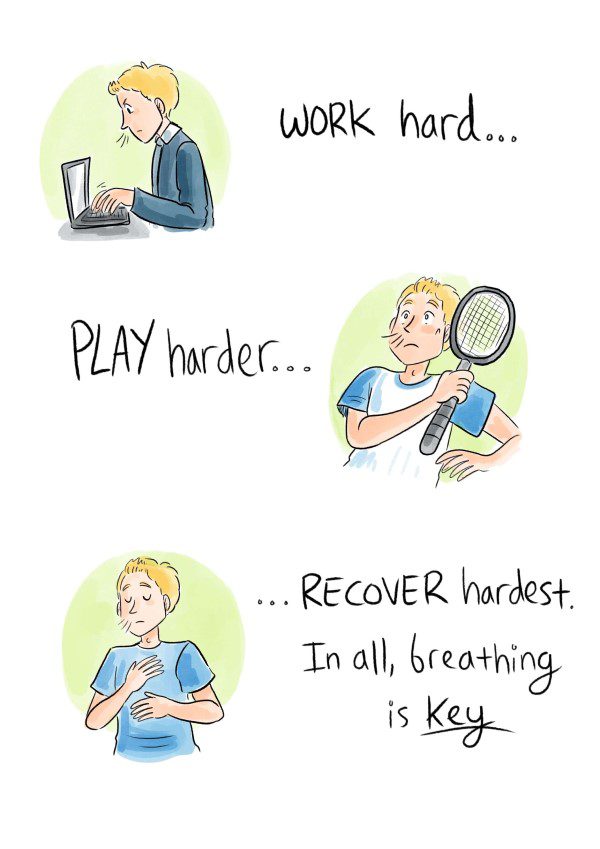
Your lung volume and arterial oxygen uptake is worse when you can’t breathe through your nose at night
Swift AC, Campbell IT, McKown TM. Oronasal obstruction, lung volumes, and arterial oxygenation. Lancet. 1988 Jan 16;1(8577):73-5.
Scientists examined lung volumes over the course of 6 to 8 weeks, during partial ongoing nasal obstruction, and total overnight nasal blockage.
Total lung capacity, functional residual capacity, and residual volume all decreased significantly with total nasal obstruction and with surgical relief of chronic nasal obstruction.
Researchers concluded that “these findings imply that the resistance to expiration provided by the nose helps maintain lung volumes and so may indirectly determine arterial oxygenation.”
What does it mean?
Mouth breathing reduces lung volume and negatively affects how much oxygen gets from your lungs to your blood.
Nose breathing increases arterial oxygen tension
Lundberg JO. Nitric oxide and the paranasal sinuses. Anat Rec (Hoboken).2008 Nov;(291(11)):1479-84
“Nitric oxide (NO) is released in the nasal airways in humans. During inspiration through the nose this NO will follow the airstream to the lower airways and the lungs. Nasally derived NO has been shown to increase arterial oxygen tension and reduce pulmonary vascular resistance, thereby acting as an airborne messenger.”
What does it mean?
When you breathe through your nose, you inhale nitric oxide deep into your lungs. Nitric oxide helps more oxygen get into your blood.
Your nose performs 30 functions on behalf of your body
Timmons B.H., Ley R. Behavioral and Psychological Approaches to Breathing Disorders. 1st ed. Springer; 1994
“According to Dr. Maurice Cottle, who founded the American Rhinologic Society in 1954, your nose performs at least 30 functions, all of which are important supplements to the roles played by the lungs, heart, and other organs.”
What does it mean?
In the nose breathing vs mouth breathing debate, the nose comes out on top every time. The nose performs 30 functions on behalf of the body. When it comes to breathing, the mouth performs no function, except as a back-up if the nose is blocked or exercise is so intensive you need to breathe a significantly greater volume of air.
During nose breathing, nitric oxide concentrations increase
Lundberg J, Weitzberg E. Nasal nitric oxide in man. Thorax.1999;(54):947-952
“Since NO is continuously released into the nasal airways the concentration will be dependent on the flow rate by which the sample is aspirated. Thus, nasal NO concentrations are higher at lower flow rates.”
What does it mean?
When you breathe more slowly, you’ll breathe a greater concentration of NO into your lungs.
Nose breathing is better for your health and plays an important role in immune system function
Lundberg J, Weitzberg E. Nasal nitric oxide in man. Thorax.1999;(54):947-952
“Among the various biological properties of nitric oxide (nasal cavity) are its effects on the growth of various pathogens including bacteria, fungi, and viruses.”
What does it mean?
Nitric oxide offers a natural first line of immune system defense against airborne pathogens such as viruses.
It’s important to breathe both in and out of your nose
Strohl KP1, Arnold JL, Decker MJ, Hoekje PL, McFadden ER. Nasal flow-resistive responses to challenge with cold dry air. J Appl Physiol (1985). 1992 Apr;72(4):1243-6.
“To determine if mucosal surface heat and water loss influence the nasal functional response to cold air, we measured nasal resistance by posterior rhinomanometry. During the challenge period, the subjects breathed either in and out of the nose or in through the nose and out through the mouth. No changes in nasal resistance developed when subjects breathed exclusively through the nose.
However, when subjects breathed in through the nose and out through the mouth, nasal resistance was increased 200% at 1 min (P less than 0.01) after the challenge and returned to baseline values by 10 min after cessation of the challenge.”
What does it mean?
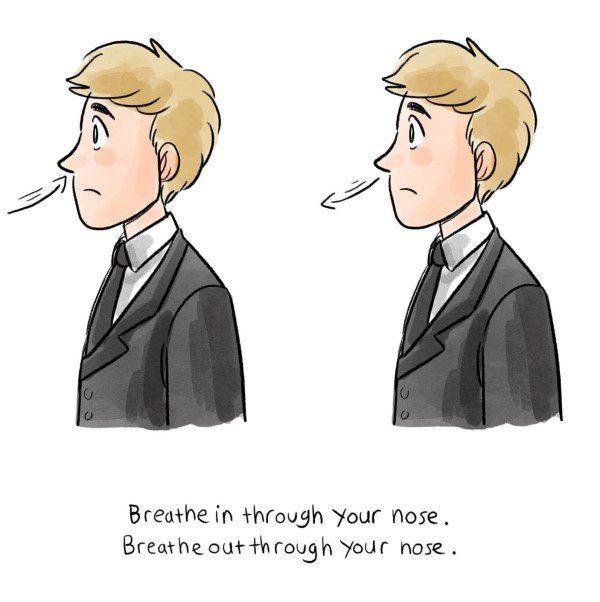
Breathing in through your nose and out through your mouth can result in a stuffy nose that lasts for up to ten minutes. This makes it harder to maintain nose breathing. Exhaling through your mouth gets rid of more carbon dioxide, so the idea is that it reduces air hunger. But if you breathe in and out through your nose during exercise, you will become less sensitive to air hunger long term, and breathing efficiency will improve, delaying breathlessness.
Nose breathing improves pulmonary function
Airway physiology. Tidsskr Nor Laegeforen. 1999 Nov 10; 119(27)
“Nitric oxide (NO) has important functions in a variety of physiological and pathophysiological processes in the body, including vasoregulation, haemostasis, neurotransmission, immunity and respiration. The discovery of surprisingly high concentrations of NO in the nasal airway and paranasal sinuses has important implications for the understanding of airway physiology. The high NO levels in the nasal and paranasal airways contribute to the first line defence against microorganisms. Furthermore, autoinhalation of nasal NO may improve pulmonary function and other remote physiological processes.”
What does it mean?
The nitric oxide you inhale during nose breathing improves the function of your lungs, immune system, blood vessels and breathing.
Nitric oxide in the nasal airway offers a new way to look at disease in the ears, nose, and throat
Am J Otolaryngol. 2001 Jan-Feb; 22(1):19-32.
“The surprisingly high concentrations of NO in the nasal airway and paranasal sinuses has important implications for the field of otorhinolaryngology.”
What does it mean?
Otorhinolaryngology is the study of diseases in the ears, nose, and throat (ENT). A high concentration of nitric oxide is present in the nose. This nitric oxide could potentially be useful in treating or preventing diseases of the ears, nose, and throat.
How does maximal oxygen consumption compare between nose breathing vs mouth breathing?
Morton, King, Papalia 1995 Australian Journal of Science and Medicine in Sport 27, 51-55
“During exercise, nasal breathing causes a reduction in FEO2 (fraction of expired air that is oxygen (O2%)), indicating that on expiration the percentage of oxygen extracted from the air by the lungs is increased and an increase in FECO2, indicating an increase in the percentage of expired air that is carbon dioxide.”
What does it mean?
Your lungs can extract more oxygen from inhaled air when you breathe through your nose during exercise compared with mouth breathing.
Nose breathing increases blood oxygen uptake by 18%
Growth & Development 2005
“Nitric oxide inhaled via nasal respiration has been shown to increase oxygen exchange efficiency and increases blood oxygen uptake by 18%, while improving the lungs’ ability to absorb oxygen.”
What does it mean?
Nose breathing is more efficient and results in greater oxygenation of the blood, making more oxygen available to fuel your working muscles during exercise.
Can’t breathe through your nose at night? Mouth breathing is impacting your sleep and your performance.
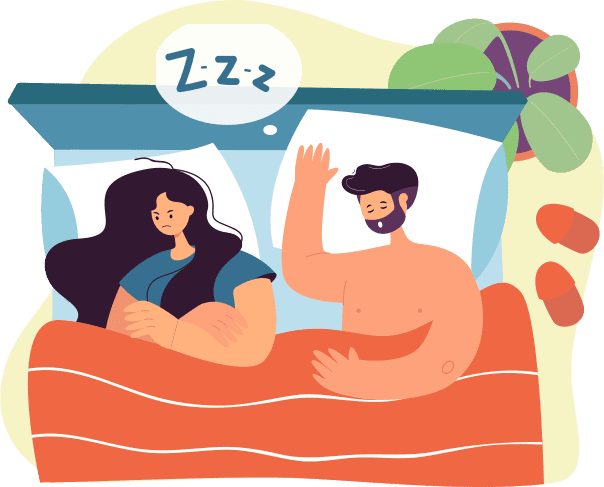
In the run up to competition, it is normal to have trouble falling or staying asleep. Stress, a heavy training schedule, travel and jet lag can lead to insomnia. Daytime mouth breathing can also cause poor quality sleep, simply because it is faster than nose breathing. In rodent studies, scientists identified an area of the brain that triggers arousal when breathing is fast. Fast breathing during the day can contribute to hyperarousal of the sympathetic nervous system, which can trigger insomnia [15].
Nose breathing during sleep can be challenging. It’s impossible to monitor your breathing when you are unconscious. But mouth breathing during sleep impacts your immune response and airway health, as well as your sleep quality. And studies have confirmed it makes sleep apnea much worse [16]. If you can’t breathe through your nose at night, it is likely you suffer with sleep-disordered breathing, snoring or sleep apnea.
Sleep apnea is linked with poor cardiovascular health, depression, and sexual dysfunction. It’s considered an “old man’s disease.” But even adolescent athletes are prone to sleep disorders, just as they are to asthma, colds, flu and COVID.

One study of teenage athletes links snoring and sleep apnea to sudden cardiac death [17].
Sleep disorders are hard to self-diagnose. What’s more, it’s common for professional athletes to feel fearful about seeking help [14]. In a competitive atmosphere, it can feel like success equals “survival of the fittest.”
Mouth breathing during sleep is a serious matter that it’s unwise to ignore. Fortunately, the solution is right in front of your nose!
How to breathe through your nose, 8 things you can try today/tonight

- Switch to full-time nose breathing. This adds a load to breathing that strengthens the diaphragm. If you want to add more resistance, try nose breathing with a training mask for even better results.
- During training, instead of pushing through with an open mouth, slow down and continue breathing through your nose.
- If you struggle to practice nose breathing due to a deviated septum or small nose, use a nasal dilator. If you can breathe through your nose for one minute, you can do so for life.
- Practice breathing exercises to engage your diaphragm, slow your breathing and reduce breathing volume to improve tolerance to CO2 (increase your BOLT score).
- Practice breath holding exercises to give your diaphragm a workout.
- A high breathing volume contributes to snoring and sleep apnea. Spend 15 minutes before you go to bed practicing a reduced breathing exercise. This will calm hyperarousal and normalize your breathing volume.
- Tape your mouth during sleep to ensure nose breathing at night. By using MYOTAPE along with breathing exercises to resolve sleep-disordered breathing, you will experience better recovery, improve pre-match prep, and reduce stress.
You can use MYOTAPE during training too. Because it doesn’t cover the lips, you can still communicate and hydrate, but with a support that will help you maintain nose breathing.
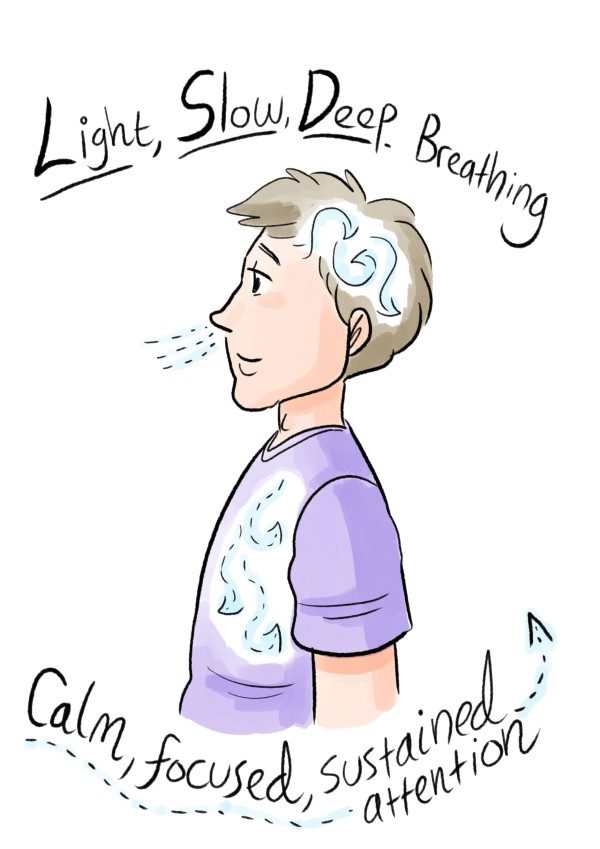
References:
- Cavaggioni, Luca, Athos Trecroci, Damiano Formenti, Rosalba Courtney, Giacomo Dascanio, Raffaele Scurati, Lucio Ongaro, and Giampietro Alberti. “Effects of a nasal breathing protocol on physical fitness and pulmonary function in young basketball players.” The Journal of sports medicine and physical fitness (2021).
- Cottle, M.H., 1987. The work, ways, positions and patterns of nasal breathing (relevance in heart and lung illness). Reprinted in: Barelli, P., Loch, W.E.E., Kern, E.R., Steiner, A. (Eds.), Rhinology. The collected writings of Maurice H. Cottle, MD. American Rhinologic Society, Kansas City, Missouri.
- Dallam, George M., Steve R. McClaran, Daniel G. Cox, and Carol P. Foust. “Effect of Nasal Versus Oral Breathing on Vo2max and Physiological Economy in Recreational Runners Following an Extended Period Spent Using Nasally Restricted Breathing.” International Journal of Kinesiology and Sports Science 6, no. 2 (2018): 22-29.
- Strohl, Kingman P., Jean L. Arnold, Michael J. Decker, Peter L. Hoekje, and E. R. McFadden. “Nasal flow-resistive responses to challenge with cold dry air.” Journal of Applied Physiology72, no. 4 (1992): 1243-1246.
- Lundberg, J. O. N., and E. Weitzberg. “Nasal nitric oxide in man.” Thorax 54, no. 10 (1999): 947-952.
- George Dallam, Carol Foust. Can Yoga Breathing / Pranayama Concepts Be Reasonably Extended to Conventional Endurance Training?. W J Yoga Phys Ther & Rehabil 2(3): 2020. WJYPR.MS.ID.000536.
- Rodríguez-López, Elena Sonsoles, Sofía Olivia Calvo-Moreno, Ángel Basas-García, Fernando Gutierrez-Ortega, Jesús Guodemar-Pérez, and María Barbaño Acevedo-Gómez. “Prevalence of urinary incontinence among elite athletes of both sexes.” Journal of Science and Medicine in Sport (2020).
- Carlsen, Kai-Håkon. “Mechanisms of asthma development in elite athletes.” Breathe 8, no. 4 (2012): 278-284.
- Maffetone, Philip B., and Paul B. Laursen. “Athletes: fit but unhealthy?.” Sports medicine-open 2, no. 1 (2016): 1-4.
- Bradley, Helen, and Joseph Dr Esformes. “Breathing pattern disorders and functional movement.” International journal of sports physical therapy 9, no. 1 (2014): 28.
- McLaughlin, Laurie, Charlie H. Goldsmith, and Kimberly Coleman. “Breathing evaluation and retraining as an adjunct to manual therapy.” Manual therapy 16, no. 1 (2011): 51-52.
- Neiva, Patricia Dayrell, Renata Noce Kirkwood, Polyana Leite Mendes, Karl Zabjek, Helena Gonçalves Becker, and Sunita Mathur. “Postural disorders in mouth breathing children: a systematic review.” Brazilian journal of physical therapy 22, no. 1 (2018): 7-19.
- Marshall, Geoff JG, and Anthony N. Turner. “The importance of sleep for athletic performance.” Strength & Conditioning Journal 38, no. 1 (2016): 61-67.
- Fullagar, Hugh Head Kelsham. “Sleep-related issues facing professional football players.” PhD diss., 2017.
- Yackle, Kevin, Lindsay A. Schwarz, Kaiwen Kam, Jordan M. Sorokin, John R. Huguenard, Jack L. Feldman, Liqun Luo, and Mark A. Krasnow. “Breathing control center neurons that promote arousal in mice.” Science 355, no. 6332 (2017): 1411-1415.
- Hsu, Yen‐Bin, Ming‐Ying Lan, Yun‐Chen Huang, Ming‐Chang Kao, and Ming‐Chin Lan. “Association Between Breathing Route, Oxygen Desaturation, and Upper Airway Morphology.” The Laryngoscope (2020).
- Iso, Yoshitaka, Hitomi Kitai, Etsushi Kyuno, Fumiyoshi Tsunoda, Naoya Nishinaka, Masahiko Funato, Eiichi Nishimura et al. “Prevalence and significance of sleep disordered breathing in adolescent athletes.” ERJ open research 5, no. 1 (2019).